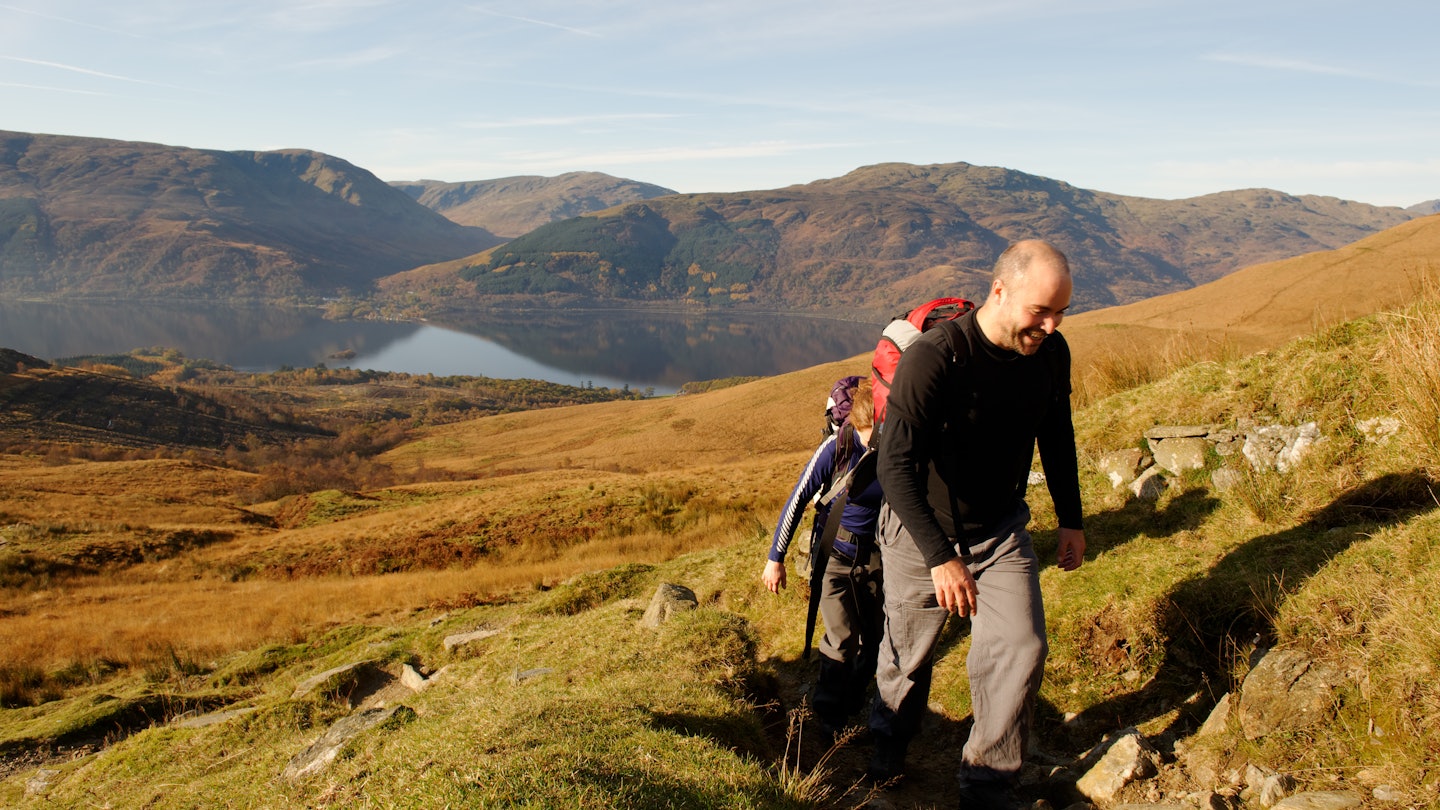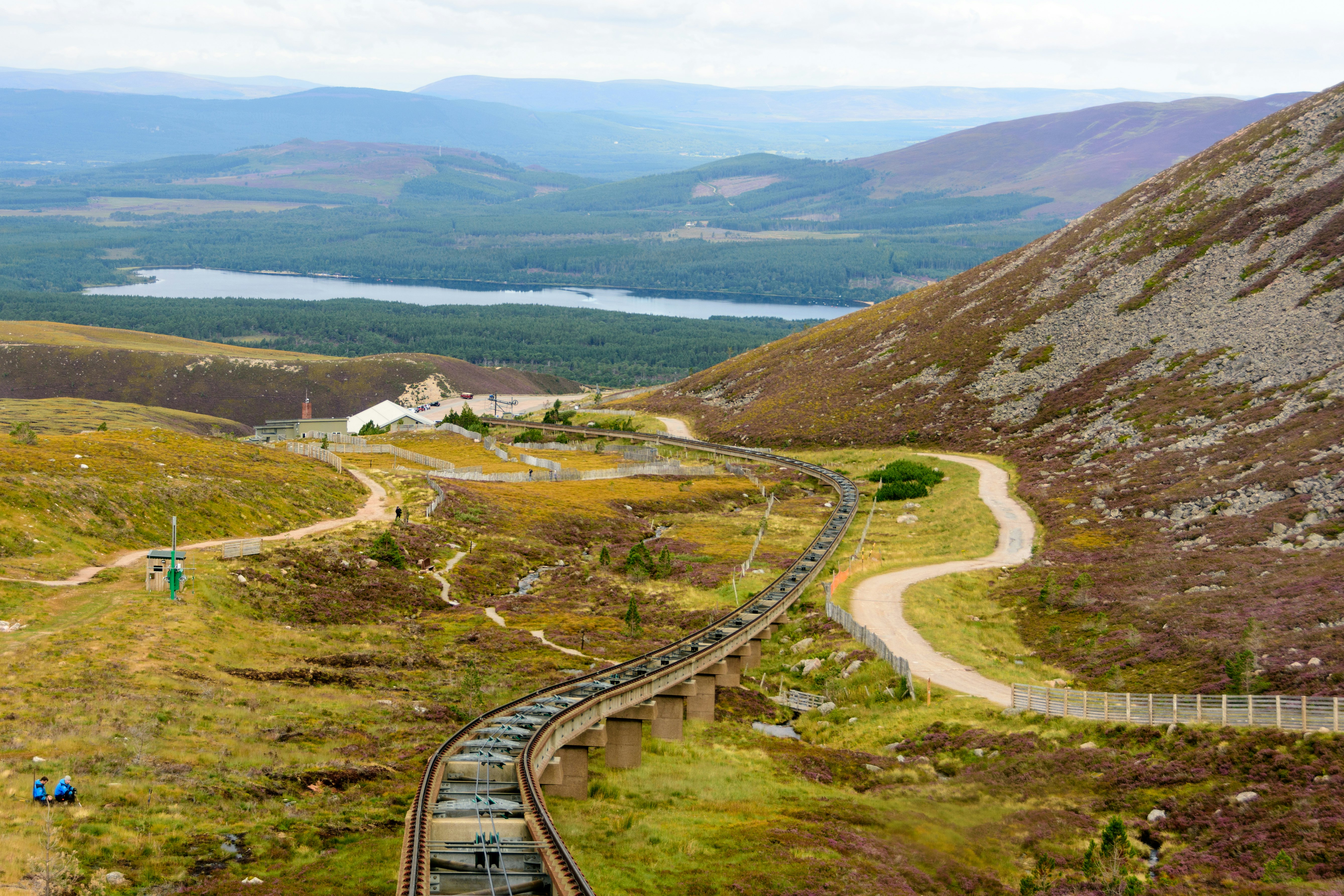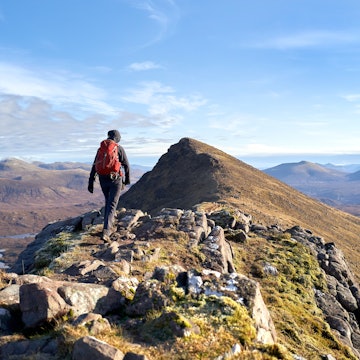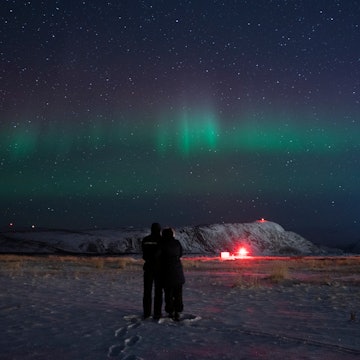

Hiking up a Munro will take you to the heart of the Scottish landscape © dchadwick / iStockphoto / Getty Images
When Scottish mountaineer, Sir Hugh Munro, published a list of the highest mountains in Scotland in 1891, he gave his name to one of the world’s most revered collections of peaks. A glorious culture of challenging hikes and bunking down in frugal bothies (overnight huts), with the unforgettable rewards of sweeping views and fireside camaraderie, has since grown up around these towering, imposing Munros.
You’ll see their lofty summits as you travel throughout the Scottish Highlands, from The Trossachs and the Isle of Skye to Wester Ross and the far north, but tackling the climb to the top of a Munro is a tale for the ages. Here’s everything you need to know about Munros – including the best Munros to “bag.”
Scout new ways to explore the planet's wildest places with our weekly newsletter delivered to your inbox.
How high is a Munro?
Munros are officially defined as mountains more than 3000ft (914m) in height, but gargantuan summits such as Ben Macdui, Braeriach and Cairn Toul in the Cairngorms area cross the 4265ft (1300m) mark. Of course, altitude isn’t the only challenge for hikers; you also need to factor in the rough Highlands terrain and inclement weather. Choose peaks according to your hiking ability and equip yourself for extreme weather and you can enjoy Munro routes in safety, from relatively easy hill walks to hardcore mountaineering ascents.
How many Munros are there?
There are officially 282 Munros, ranging from towering Ben Nevis near Fort William to nearby Beinn Teallach, which only just sneaks Munro status at 3002ft (915m). With many Munros looming side by side, hardy hillwalkers can “bag” multiple Munros on one wholesome holiday – or even in a single day. This has led to the sport of Munro bagging, following in the footsteps of Rev AE Robertson, who became the first “compleatist” when he finished climbing every one of the legendary summits in 1901.
What are Corbetts, Donalds, Grahams, Hughs and Murdos?
With more than 7000 peaks dominating the Scottish landscape, the categories of summits for mountaineers and hillwalkers extend far beyond Munros. In the bothies and pubs of the Highlands, weathered hikers speak respectfully of Murdos – Munros with a minimum drop of 98.5ft (30m) on all sides. There are also Corbetts at 2500ft to 3000ft (762m to 914m), Grahams at 2000ft to 2500ft (610m to 762m) and Donalds, lowland hills that are taller than 2000ft (610m). Most are named after Scottish mountaineers. The latest category is Hughs, which stands for “Hills under Graham height,” covering peaks less than 2000ft (610m).

Ben Lomond
Most popular and accessible Munro
7.5 miles (12km) round trip, 5 hours, moderate
The pride of Loch Lomond & The Trossachs National Park, and Scotland's southernmost Munro, 3195ft (974m) Ben Lomond is even more popular than Ben Nevis, and it's only 40 miles northwest of Glasgow. This does mean that the distinctive cone visible from Balloch isn’t the best place to find splendid isolation, but the broad path from Rowardennan is an easy place to start the quest to conquer your first Munro. A gradual ascent via the south ridge leads to sweeping views of silvery Loch Lomond, overlooked by a chain of ridges rippling beguilingly away into the Highlands.
Ben Nevis
Best Munro for bragging rights
10 miles (16km) round trip, 7–8 hours, moderate
Poet John Keats likened the ascent of this 4413ft (1345m) king of Munros to “mounting ten St Pauls without the convenience of a staircase.” After tackling the path between gullies and burns (streams) from the Ben Nevis Visitor Centre, you may favor the interpretation that the granite peak’s name in Scottish Gaelic means simply "malicious" – rather than “the mountain with its head in the clouds.” As well as being an important tick on the Munro baggers’ list, the rocky plateau at the summit offers sublime views across Loch Linnhe on clear days, and you may spot buzzards and kestrels from the cairn-marked path.
Ladhar Bheinn
Best Munro for wild scenery and a remote pint
8 miles (13km) round trip, 8 hours, challenging
Ladhar Bheinn is mainland Scotland’s westernmost Munro, and the highest point on the Knoydart Peninsula, often described as Britain’s last great wilderness for its 200 square miles of rugged scenery. You can climb the 3350ft (1021m) "claw mountain" on the multi-day hike from Kinloch Hourn to Inverie, on the leg between the Barrisdale bothy and the finishing line. If you plan to return to Barrisdale from the top, you can follow a circular route along the ridges, ascending from boggy swamps and midges to glacial carries and multiple summits with views of Skye’s Cuillin range. A pint in The Old Forge, mainland Britain’s remotest pub, awaits in Inverie.

Cairn Gorm
Best Munro for fair-weather climbers
7 miles (11km) round trip, 6 hours, challenging
Cairngorms National Park has more than 50 Munros, accounting for a third of the UK’s terrain above 1970ft (600m), and its namesake peak is one of the most popular climbs in Scotland. One simple reason for this is the easy head start offered by driving to the ski resort car park at 2080ft (635m), with the option to continue to 3599ft (1097m) on the funicular railway when it reopens in 2023. If you do take the train, you may be obliged to join a guided walk to reach the summit at 4084ft (1245m).
Munro baggers and environmentalist critics of the railway insist that walking is the best route to the top, with soaring cliff faces, winter snowdrifts and a visiting reindeer herd in the Northern Corries. You’ll enjoy views across the UK’s largest national park, with the chance of spotting rare birds such as the Munro-dwelling ptarmigan.
Fionn Bheinn
The best Munro for views of Scotland's northwest
7.5 miles (12km) round trip, 6 hours, moderate
This oft-overlooked mountain offers a relatively easy introduction to the wild northwest Highlands region, a mass of Munros and lesser peaks, roughly bound by Torridon, Ullapool and Dingwall. Striking out from the popular baggers’ base of Achnasheen, you’ll cross a deceptively mild landscape of grassy slopes, bogs and burns before reaching the main ridge, where the craggy Toll Mòr corrie dominates the scene.
From the trigpoint at the 3061ft (933m) summit, you’ll enjoy sweeping views of Loch Fannich, with the Fannich and Torridon ranges leading the eye off into the far distance. It’s easy to see why the impressive mountain inspired a cryptic prediction by Scotland’s 17th-century answer to Nostradamus, Brahan Seer – though the prophesied plaid-wearing, blood-drinking raven has yet to materialize.















